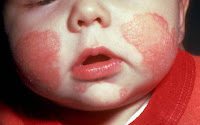Meniere's disease occurs in the inner ear and causes dizziness, temporary hearing loss, and/or ringing and pressure in the ears. Attacks happen suddenly and can be as brief as 20 minutes or as long as several hours. Symptoms include a continuous, low-pitched noise or feeling of pressure in the ear.
In 1861 Prosper Menière, a French medical practitioner, identified the syndrome affecting people who suffered extreme dizziness, ringing in the ears and temporary total loss of balance accompanied by nausea or a combination of all symptoms. The disease that bears his name is thought to be a condition in which there is an excess of endolymph, an inner ear fluid creating a condition called ‘hydrops’.
Anybody can get Meniere's, male or female, young children to old age pensioners.
Tinnitus
An abnormal ringing noise inside the ear. Distorted hearing and pressure in the ear often occurs in conjunction with the vertigo.
Vertigo
A form of dizziness where your surroundings appear to spin due to involuntary eye movements. In Meniere’s Disease, the ‘attacks’ usually occur in clusters and can occur without warning, often accompanied by vomiting.
Hearing Loss
Fluctuating hearing loss with a feeling of pressure or fullness in the ear is thought to be due to inner ear fl uid build up. Hearing returns to normal levels following a vertigo attack, but as the disease progresses, measurable and permanent hearing loss occurs as delicate hair cells are destroyed. Hearing aids are then required.
Balance Problems
The last stage is often referred to as ‘burnt out’. Hearing loss may be severe. Tinnitus is less of a problem, attacks of vertigo are less frequent and eventually cease. Vomiting, nausea and dizziness are mild. When the ear has lost 50% of its balance function, a persistent feeling of of unsteadiness or floating may replace attacks of vertigo. Imbalance is more noticeable in the dark. Some people may experience ‘drop attacks’ (Tumarkin’s Crises) when without warning, balance is suddenly lost and they drop to the ground.
Meniere’s Disease is associated with an abnormality of a part of the inner ear called the labyrinth. This includes the cochlea (which converts vibrations caused by sound waves into signals to the brain) and the semicircular canals (which control balance and a sense of bodily motion). Meniere’s disease may result when the balance of fluids contained in the labyrinth is interrupted by a blockage or rupture; researchers are still unsure of this condition’s exact causes.
• A feeling of pressure or “fullness” in the affected ear
• Hearing loss (which is usually temporary but can become permanent over time)
• Vertigo (a sense of dizziness and imbalance)
• Tinnitus (a ringing, buzzing, or other sound with no external cause)
• These symptoms usually last for two to four hours at a time, although this can vary.
• In the hydropic ear, excess fluid, in some way, disturbs the tiny balance and hearing mechanisms and produces the symptoms. The extra pressure in the delicate balance and hearing canals distorts or blocks sound and balance information to the hearing and balance nerve and to the brain. This may be the cause of roaring or tinnitus, hearing loss and incorrect balance information, rather like an ‘error message’ to the brain. Sufferers can often experience vertigo, 'brain fog' and visual disturbances.
Treatment
The treatment for Meniere’s disease differs from patient to patient. At CEI, Otologists strive to diagnose the cause of the disorder and then to treat the symptoms of the disorder. This includes first the symptoms of vertigo or balance disorder followed by hearing loss and tinnitus.
In many patients, dietary modifications in the form of low salt diets plus diuretic therapy to lower inner ear fluid pressure can reduce symptoms. In others, second line therapy in the form of the Menniette Device, Intratympanic Gentamycin, or Endolymphatic Shunt Surgery are needed to control symptoms. If other methods fail, surgery to eliminate the ability of the balance nerve to send signals to the brain is needed. Hearing loss associated with Meniere’s Disease can be ameliorated through the use of hearing aids, BAHA implantation, or in the case of individuals with bilateral Meniere’s Disease, cochlear implants.
The progression of Meniere’s disease is unpredictable. Symptoms may become more severe, remain the same, or disappear completely. Overall, over 95% of patients with Meniere’s disease will achieve vertigo control when treated by a CEI Otologist. Treatment is very individualized and begins with a thorough work up and evaluation followed by a treatment plan.



























